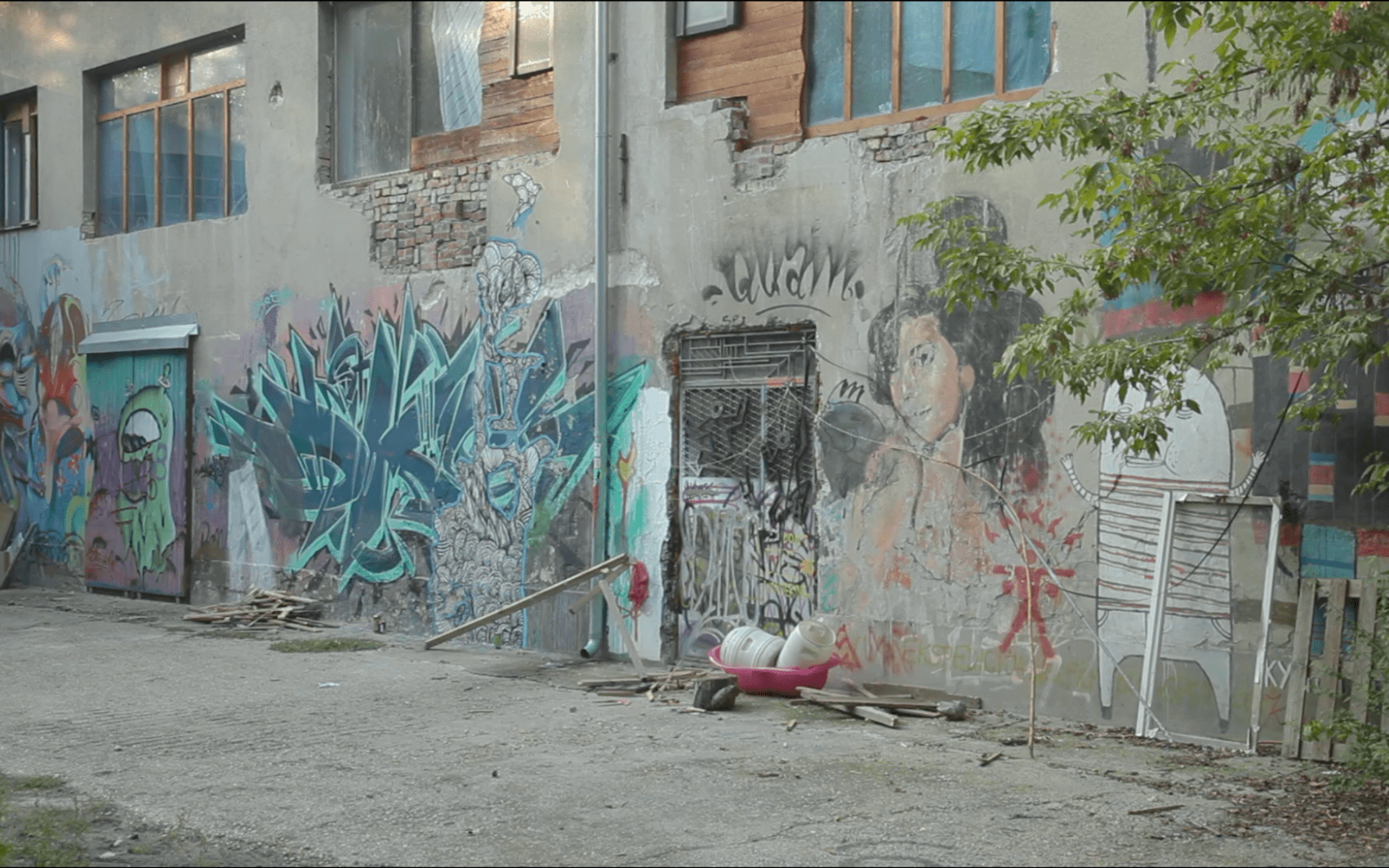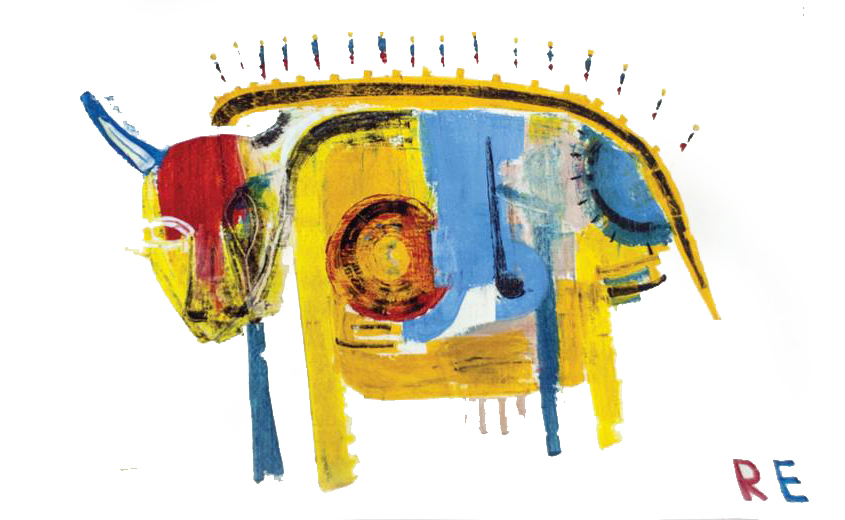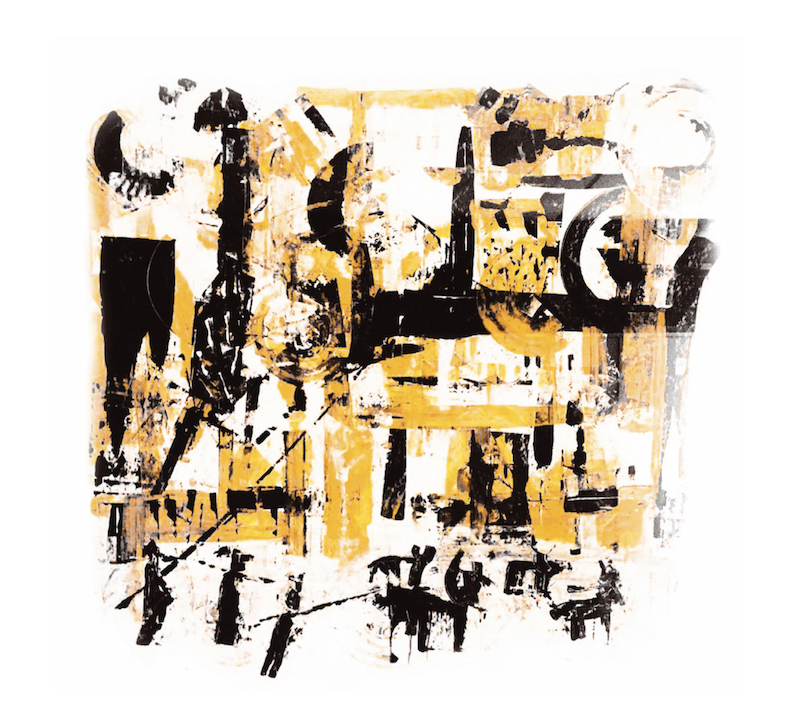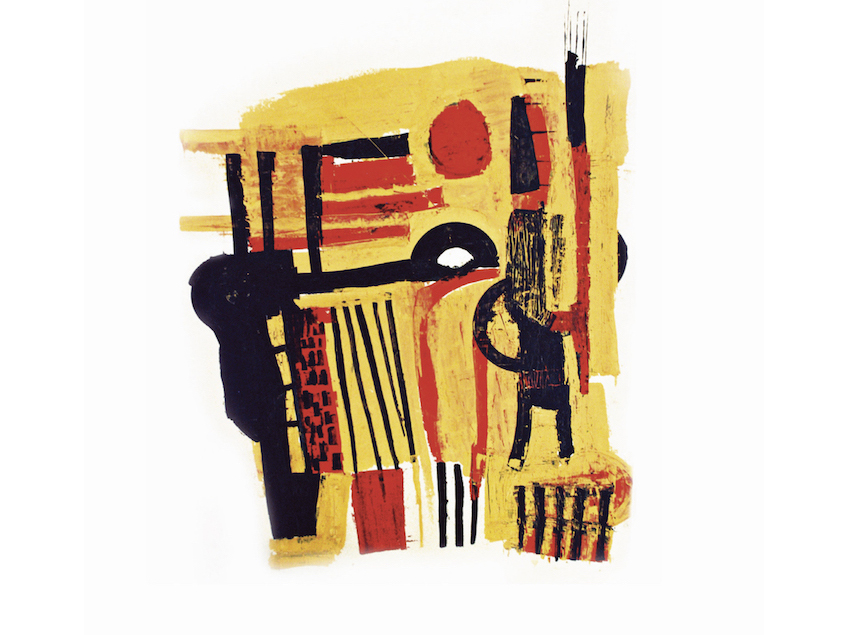Sinisa was born in Vranje in 1988. He studied at the Faculty of Philology and later fell in love with painting and illustration. He has had three international solo exhibitions so far and a studio Reilustruje. He plays bass in the band Dogs In Kavala.

How did you start painting?
During my studies at the Faculty of Philology, I met a crew of painters. We would often get together, hang out, and paint all day long. I loved painting and my friends’ reactions were really positive; in a way, this encouraged me to continue doing it.

At some point you painted and exhibited at Inex, a squat in Belgrade. How would you describe this experience?
Inex had a variety of people circulating there all the time and a lot of empty and untidy rooms. There was one cool room I was allowed to use as a studio. I tidied it up, cleaned up the mess, and when I walked in, I literally didn’t go out for the next three or four months. This was my first atelier. I would spend the whole day painting, which resulted in three international exhibitions.
Inex had a gallery which showcased works by artists from Serbia and abroad. Were you a part of it? Did you have any interaction with the other artists working there?
I helped in the gallery as much as I could, but it was run by other people. Inex had many talented painters who were much more experienced than me.
Since I painted during the whole day, people would sometimes pass by my room, look at the work and comment on it. I think they helped me with their support and constructive comments, because it is hard to create on your own, isolated, not knowing if you are on the right path. You lack people’s critique. I believe you shouldn’t create art just for yourself; other people should also see your work and experience it. The artists and friends from Inex were the wind at my back. I was accepted, loved and supported, which was very important during that period.

It is interesting that at Inex you started painting the motives which remind us of cave painting. How did you become interested in it?
With time, all sorts of images are stored in our memory. I studied Hispanic Culture. We had lectures on Altamira and cave painting. And then, at some point, the door of my mind opened at the Kosutnjak forest, when I tried some mushrooms.
I had a mental image of fragments which reminded me of the Mayan and Aztek art I had read about. After this experience, I came back to my dorm and started painting The Hunt with my canteen card.

The colours we see in your paintings are extraordinarily vivid.
Yes, I have made my colours using pigments and wax. I liked the fact that a colour made in this way did not belong to the paper only, but had an interesting texture as well. Plus, I love ochre, black, and turquoise. I could just mix ochre my whole life (laugh).
The drawings by prehistoric man had always inspired me, but I wanted to paint in a more modern way. I used a spatula for painting and I wanted to create something raw but also make a colour balance in the painting.
You paint on big canvases and leave free and intuitive brush strokes visible. What attracts you to such a treatment?
Yes, I love that freedom of movement. Through the process I always learned. Surrendering to intuition allowed me freedom, learning and mistakes.
I like being absorbed by one colour; this enables me to open the doors of perception. For example, whenever I see turquoise, I become overwhelmed by feelings such as lightness, connection, easier breathing, and inner warmth, like someone who has just eaten a piece of chocolate. I experience ochre as an earth tone, as movement, and a kind of base.

In addition to painting, you are a musician and you work as an illustrator.
How are all these things connected?
I like exploring. I think it’s good for people to keep developing themselves and not stay in a single area of interest. To illustrate – there were jam sessions in Inex, where I learned to play the guitar. I had always been fascinated by this instrument. Later on I formed a band with my friends. It was all unexpected. This path was not predetermined.
I believe learning new things is great, because you can get bored if you focus only on one thing; plus you are constantly maturing, so it’s normal to broaden your field of interest.
When we formed the band Dogs in Kavala, I was still devoted to painting – that was something intimate, something I could do and explore on my own, whereas with music I could develop in a different way, learn different things and meet new people. The band was really helpful in that process. Had I stayed only on painting, I don’t know…
I’m currently learning how to play the synthesizer while I continue to paint all day long since I illustrate for a living. The future is an open path, really.



